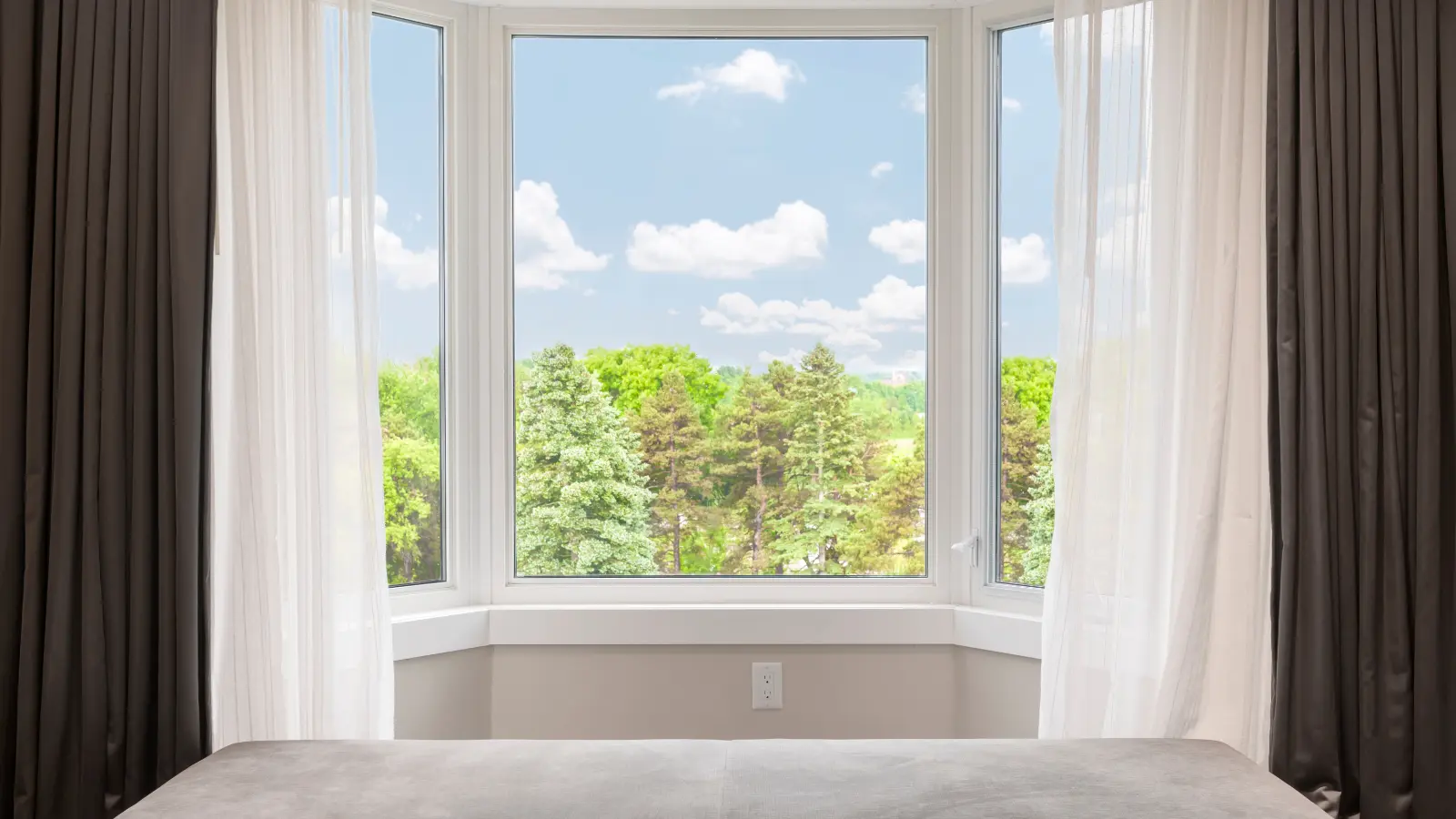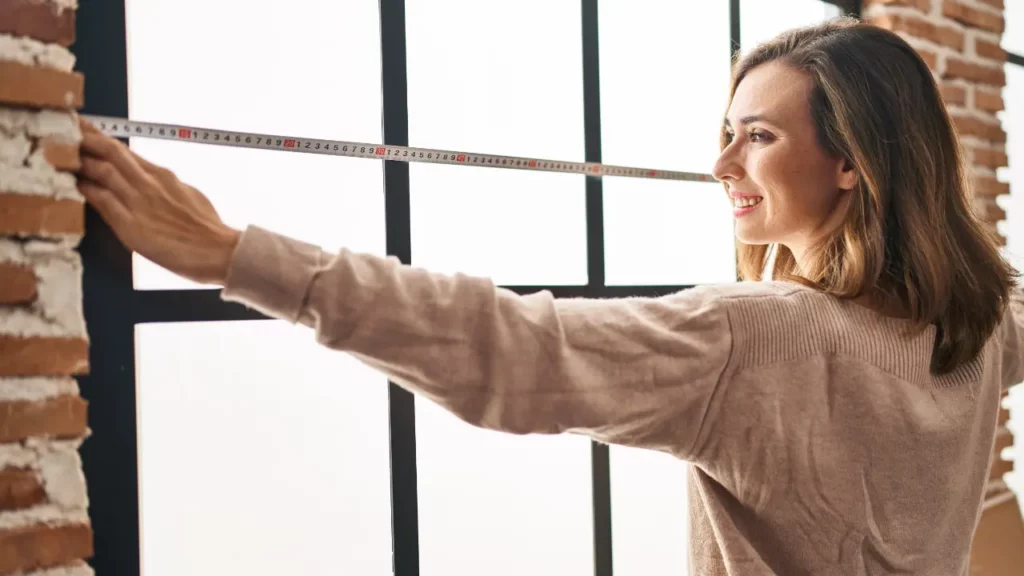Reviving the Room with Designer Bay Window Curtains

Bay windows are a beautiful feature in any home, offering stunning views and ample natural light. However, many homeowners may not know how to dress them up. This is where designer curtains come in. Not only do they add a decorative touch, but they also provide privacy, insulation, and light control.
Why Choose Designer Curtains?
Designer curtains are a step up from regular curtains, usually created by professional interior designers or renowned curtain brands. There are many features specific to designer curtains that make them a better choice than standard curtains, including, but not limited to:
- Superior quality materials: Designer curtains are made from high-quality materials such as silk, linen, and velvet, giving them a luxurious look and feel.
- Attention to detail: Designers craft their curtains with meticulous precision and care, from stitching to finishing touches.
- Unique designs: They often feature unique patterns and styles that cannot be found in regular curtains, making them a statement piece in any room.
- Perfect fit: Bay windows can be challenging to fit with standard curtains, making made-to-measure options a must-have.
- Professional advice: When buying designer curtains, you will likely have the opportunity to seek expert advice from the designers regarding color schemes, patterns, and curtain styles that perfectly complement your home.
Choosing the Perfect Curtains for Your Bay Windows
Once you’ve decided to go with designer curtains, it’s time to figure out how to choose the perfect set for your bay windows. In the following sections, we’ll provide a comprehensive guide on selecting the right style, color, and fabric, ensuring a seamless integration of your new curtains into your space.
The Importance of Fabric Selection
The fabric of your curtains is crucial as it will determine your bay windows’ overall look and feel. Opt for heavier fabrics like velvet or wool for a cozy and warm atmosphere, or choose lighter materials such as sheer or cotton to let in more natural light. Also, consider the color of the fabric – darker colors can add drama and sophistication, while lighter colors can make a smaller room feel more spacious.
Length & Width Considerations
There are a few things to remember that will affect your desired style and functionality regarding curtain length and width.
For curtain length, there are several different styles to choose from:
- Sill length: This style falls just below the windowsill and is perfect for bay windows with a radiator underneath.
- Apron length: If you prefer a more casual or practical style, apron-length curtains are a good choice. They typically end just below the window sill and provide easy access to the windows while also providing enough privacy coverage.
- Floor length: Floor-length curtains create a dramatic effect and make the room feel taller. They are best suited for those desiring to add some elegance to their bay windows. Ideally, they will extend from the rod or track to the floor without touching it.
- Puddle length: As the name implies, this style uses curtain lengths that gracefully cascade and “puddle” on the floor, creating an elegant and luxurious look. Remember that this style requires extra fabric and may be better for low-traffic areas.
- Cafe curtains: Often used in kitchen and dining areas, this style covers only the bottom portion of the window. They provide a lot of natural light to a room but may not be the best choice if you are looking to maximize privacy.
Now that we’ve discussed the primary options for curtain length let’s delve into some important factors to take into account when determining the curtain width:
- Stacking space: There is often limited space on either side of bay windows, which may affect how they stack when open. Measure the available width and choose a curtain style that will stack without obstructing the window view or interfering with furniture.
- Single or multiple panels: For bay windows with ample space, you can use either a single large curtain or multiple smaller ones. Opting for a single panel will create a sleek and consistent appearance, while individually operable panels offer greater flexibility in controlling light and privacy.
- Curtain Rod Placement: The positioning of the curtain rod can also impact the width of your curtains. Extending the curtain rod beyond the bay window frame allows you to create a more expansive look, enabling the curtains to hang freely and not obstruct any part of the window, ensuring a seamless and aesthetically pleasing window treatment.
Curtain Style: The Final Touch to Your Bay Windows
Choosing the right curtain style for your bay windows can dramatically influence the room’s aesthetic and functionality. Let’s explore the primary types commonly utilized in bay windows:
- Tapestries: Tapestries can provide a unique and artistic touch to your bay windows. They come in various designs, colors, and sizes, allowing you to display your style. Tapestries are typically larger than regular curtains and can cover the entire bay window.
- Roman Shades: Roman shades are an excellent choice for those who desire a clean, timeless look. They are fabric shades that rise in folds when raised and lie flat when lowered, providing excellent light control. They can be customized to fit the exact size of your bay windows, enhancing your room’s aesthetics while maintaining privacy.
- Drapes: Drapes often bring an air of elegance and theatrical flair to your bay windows, making them a perfect option for bay windows, which are typically a focal point in a room. They also provide excellent insulation, keeping your room warm in winter and cool in summer, potentially reducing energy costs.
- Valances: These are short curtains or drapes covering a window’s top part. Use them by themselves for a decorative effect or pair them with other window treatments like drapes or shades for added privacy. They are a great option to avoid blocking too much natural light.
- Layered Curtains: Layered curtains use two curtain layers, the first being a light, sheer curtain that allows natural light in and the second a heavier, opaque curtain for privacy and light control. This style is particularly beneficial for bay windows as it will enable you to control the amount of light entering the room and offer more flexibility in terms of privacy.
- Traditional Curtains: Traditional curtains are a classic choice that always stays in style. With an array of designs, fabrics, and styles to choose from, traditional curtains can complement any room decor. They are easy to hang and provide a simple and effective way to dress up your bay windows.
Many options will perfectly complement your room and bay windows, no matter your curtain style, desired length, or fabric preference.
Measuring & Installing Your Curtains
Once you’ve decided on the perfect window coverings for your bay windows, the next step is installing them.
Step 1: Measure Your Windows
Before installation, you need to measure your bay windows accurately. This is critical to ensure proper fitting. When ordering custom curtains, the company will handle the process before you purchase.
However, if you are responsible for taking measurements, measure each window’s width, the bay’s depth, and the height from the rod placement to your chosen length. Remember that your measurements should include the extra few inches for the curtain rod placement on either side of the window.
Step 2: Choose Your Curtain Rod
After taking measurements, decide on the type of curtain rod you want to use. Flexible or corner connector rods work best for bay windows, as you can manipulate them to fit the window’s unique shape.
Step 3: Install Mounting Brackets
Based on your measurements, mark the spots where the mounting brackets will go. Drill holes on these spots and attach the brackets. Ensure that your curtains appear straight, even, and level.
Step 4: Install the Curtain Rod
Once the brackets are secure, you can install your curtain rod. If you use a flexible rod, bend it to match your bay window’s shape. Be careful not to force the rod too much, as it could snap.
Step 5: Mount Your Curtains
The next step is to hang your curtains on the rod. Thread your curtain rings or hooks through the top of your curtains, then thread these onto the rod.
Step 6: Secure the Rod
Attach the rod to the brackets once your curtains are on the rod. Ensure the rod is secure and the curtains are hanging correctly. Adjust as needed.
Step 7: Make Final Adjustments
Finally, make any necessary adjustments. Ensure the curtains open and close smoothly and the fabric hangs evenly.
Measuring for bay window curtains is essential to ensure the perfect fit. With the appropriate tools and knowledge, DIY installation is feasible. However, if you encounter difficulties, opting for professional installation will likely be your best bet.
Caring for Your Bay Window Curtains
When choosing window coverings for your bay windows, consider maintenance and cleaning, as this can change depending on the type of curtain:
- Tapestries: Larger than most curtains, tapestries tend to accumulate more dust. Periodic light vacuuming or dusting can keep them clean. It’s best to follow the manufacturer’s instructions for a deeper clean, which often involves dry cleaning.
- Roman Shades: These can be vacuumed without any attachments to remove dust. For stains, a cloth with mild detergent and warm water should suffice.
- Drapes: Regular vacuuming or steam cleaning can keep drapes looking fresh. For a more thorough cleaning, washing or dry cleaning may be needed based on the fabric.
- Valances: Remove dust with a soft brush or vacuum. Many valances can be machine-washed, but some might need to be dry-cleaned if made of certain fabric types such as silk, velvet, lace, or wool.
- Layered Curtains: The sheer layer can usually be machine-washed, while the heavier layer may require dry cleaning. Maintain with regular dusting or vacuuming.
- Traditional Curtains: Like layered curtains, regular dusting or vacuuming can maintain their look, and depending on the fabric, they can be machine-washed or dry-cleaned.
Always consider the fabric type, color, and manufacturer’s instructions when cleaning and maintaining curtains. Regular dusting or vacuuming can extend the time between deep cleaning. And spot cleaning as soon as stains appear keeps your curtains looking their best.
Wrapping Up
Selecting designer curtains for your bay windows is not just an afterthought but a pivotal part of your home décor. Here’s a quick recap:
- The Benefits: Designer curtains offer an unmatched blend of aesthetics and functionality. They provide privacy, control light, insulate your home, and amplify its visual appeal.
- Selection Guidelines: Choosing the perfect curtains involves considering factors such as fabric, color, and pattern that complement your room’s aesthetics. Don’t overlook the importance of lining and interlining for longevity and a luxurious feel.
- Measurement & Installation: Proper size ensures a perfect fit, while correct installation techniques add to the elegance and effectiveness of your curtains.
- Curtain Care: Regular cleaning, avoiding overexposure to sunlight, and professional maintenance can extend your curtain’s lifespan.
At Aeroshade, we’re here to make this process simpler for you. Don’t hesitate to reach out if you need assistance choosing or installing designer curtains for your bay windows. Call us at (323) 655-2411 or fill out the contact form on our website; we’ll be happy to help.


